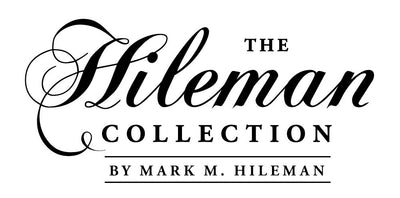Australian Crystal Opal vs. Ethiopian Opal vs. Mexican Fire Opal: Why It Matters for Your Jewelry
Posted by Mark Hileman on
Australian Crystal Opal vs. Ethiopian Opal vs. Mexican Fire Opal: What’s the Difference and Why It Matters
Opal lovers are often drawn to the mesmerizing play of color that this gem offers, but not all opals are created equal. The origin and type of opal can significantly affect its beauty, durability, and long-term wearability. At The Hileman Collection, we work exclusively with premium Australian opal for our inlay jewelry—and there’s a good reason why.
In this post, we’ll compare the three most well-known opal types: Australian crystal opal, Ethiopian opal, and Mexican fire opal—and explain why Australian opal is the superior choice for fine jewelry.
Australian Crystal Opal
Origin: Mined primarily in South Australia and Lightning Ridge
Color & Appearance: Known for its vibrant and intense play-of-color with high clarity
Structure: Non-porous and stable
Hardness: 5.5 to 6.5 on the Mohs scale
Why We Use It:
Australian crystal opal is prized for its brilliance and durability. Because it is non-porous, it is more resistant to water absorption, cracking, or color change over time. This stability makes it ideal for opal inlay rings and everyday jewelry.
At The Hileman Collection, we inlay Australian crystal opal into our handcrafted designs for its exceptional fire, durability, and long-lasting beauty. The video below shows some amazing crystal opal from Mintabie in Australia.
Ethiopian Opal
Origin: Mined primarily in the Wollo Province
Color & Appearance: Displays a vivid play-of-color, often with a "honeycomb" pattern
Structure: Highly porous (hydrophane)
Hardness: 4.5 to 6.5 on the Mohs scale
Concerns:
Ethiopian opals are hydrophane, meaning they absorb water and other liquids. This makes them highly unstable and prone to cracking, clouding, or permanent color change. For customers looking for lasting value and daily wearability, Ethiopian opal can be risky.
Mexican Fire Opal
Origin: Mined in Mexico, especially Jalisco
Color & Appearance: Usually orange, red, or yellow with little to no play-of-color
Structure: Less porous than Ethiopian opal but still softer than Australian opal
Hardness: 5.5 to 6.0 on the Mohs scale
Concerns:
Mexican fire opals are appreciated for their bright body color rather than color play. While beautiful, they are generally more fragile and less dynamic than crystal opals, making them a less desirable choice for inlay jewelry.
Why Australian Crystal Opal Is the Superior Choice
-
✅ Durability: Less porous and more resistant to cracking or color changes
-
✅ Stability: Does not absorb water, lotion, or oils like Ethiopian opal
-
✅ Color: Intense, vibrant play-of-color that stands the test of time
-
✅ Longevity: Ideal for heirloom-quality fine jewelry
-
✅ Trusted Source: Mined ethically and sustainably in Australia
Conclusion
Choosing the right opal matters—not just for appearance, but for longevity and everyday wear. At The Hileman Collection, we are committed to using only the finest Australian crystal opal in our handcrafted inlay jewelry. With its stunning fire, superior stability, and long-term durability, Australian opal remains the best investment for opal lovers.
💎 Explore our Australian Opal Jewelry Collection to find your perfect opal inlay ring, pendant, or bracelet today.
Share this post
- 0 comment
- Tags: Australian crystal opal, Australian opal, Australian Opal inlay jewelry repair, crystal opal, durable opal jewelry, Ethiopian opal, gemstone education, jewelry comparison, jewelry tips, Mexican fire opal, opal education, opal inlay jewelry, opal jewelry care, opal jewelry tips, opal pendants, opal rings, The Hileman Collection
